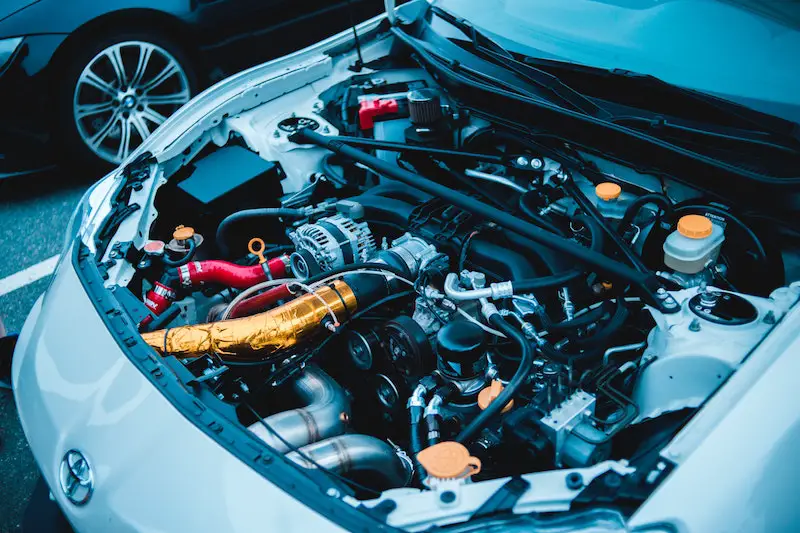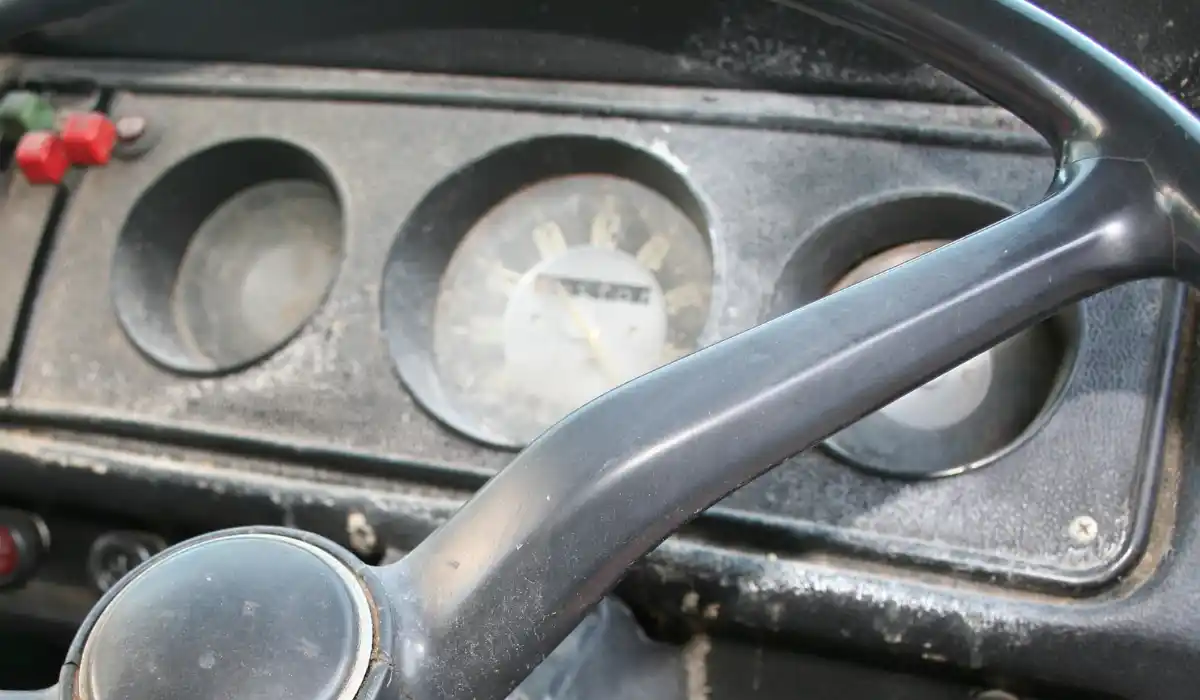
When the engine in your vehicle is running but the car isn’t moving, the engine will start idling. Depending on the conditions, the engine speed or RPM will change.
You can watch this happening by looking at the tachometer on the dashboard. It’s the idle air control valve that controls the speed that the engine is idling.
This is a crucial engine management component and connects directly to the throttle body. The idle air control valve, otherwise known as the IAC valve, is managed by the engine control unit, or ECU.
Just like with the rest of the engine components, this is not a fail-proof part. Eventually, it’s possible for it to start developing issues which can affect the performance of the engine.
In this post, we’re going to look at the different symptoms for you too keep in mind if you think your vehicle is having trouble idling. This will help you keep the idle air control valve performing at its optimal level while being able to tell if it’s going bad, failing, and how to fix it.
Jump Ahead To:
Bad Idle Air Control Valve Symptoms
You might be wondering about the bad idle air control valve symptoms if your having some trouble with the engine. Thankfully, IAC valve failure is a relatively easy problem to diagnose and there are several warning signs and symptoms.
Check Engine Light Comes On
Likely one of the first symptoms is that the check engine light comes on. When this light pops up, you can be sure there is a problem in the engine.
If you’re already suspecting that you have a bad idle control valve, the first thing you should do is to check the code for the check engine light. This can be done with your own OBD-II scanner if you have one, otherwise you’ll have to bring your car to your mechanic.
The check engine light will definitely switch on if the ECU notices peculiar or odd RPM’s when the engine is idling. If you’re still not convinced that the IAC valve could be what’s causing the problem, there may be some other symptoms popping up.
Randomly Fluctuating Engine Idle Speed
With an IAC valve that isn’t working properly, you’ll notice the engine is intermittently or randomly fluctuating the RPMs at idle. This is a definite symptom of the valve not working correctly since it’s what controls the idle speed management.
Some differences in RPM’s at idle aren’t generally a big deal. However, if you noticing a wide punctuation of 100 or more RPM’s, this could be a symptom that the idle air control valve is going bad.
It’s not a good idea to let this keep happening if you suspect that this is the problem. Having the engine keep fluctuating the RPM’s while it’s idling can trigger other problems.
When you first noticed that the idle speed keeps going up and down, this is almost a guarantee that there is an issue with the IAC valve. In this case, you’re going to want to poke around under the hood or bring your vehicle to your local mechanic.
Rougher Engine Idling
With older vehicles, the ECU isn’t able to properly compensate for issues arising from the IAC valve. If you’re driving an older vehicle and you’re experiencing rougher engine idling, it would be a good idea to have the valve checked and replaced.
When the IAC is behaving normally wear in good condition than the idling will be smooth. The vehicle will also start gently and run smoothly while being driven.
If this is not the experience you’re having, and the idling and engine feels rough, then it’s likely you have a problematic valve. The bad IAC valve can also result in intense vibrations from the rough idling and the vehicle shaking violently with the engine not getting enough air.
Frequent Engine Stalls
There are a number of reasons why the engine can stall, ranging from a dirty fuel injector or low gas levels all the way to a loose battery connection. It’s also possible that a bad idle air control valve can cause the engine to stall.
This happens because the engine won’t be getting enough air when it’s idling. Along with causing the vehicle to stall, this can also affect the overall performance of the engine and lead to other issues.
When this happens, the ECU isn’t able to compensate for the problems being caused by the bad IAC valve. Initially, the stalling will be occasional, although the stalls will become more frequent if the problem is not repaired.
Vehicle Backfires
One more symptom of a bad idle air control valve worth mentioning is that the vehicle is regularly backfiring. This can also be a problem with motorcycle backfiring, something we covered in another article.
The problem with the engine backfiring is that it can be a sign of other engine issues. If the vehicle is jerking as it decelerates and you can see excessive fuel dripping from the tailpipe, then this is likely a bad IAC valve.
With any backfiring it’s a good idea to pull codes if you’re getting a check engine light. Otherwise, consider bringing your vehicle to a professional so they can take a look at it.
How to Fix a Bad Idle Air Control Valve

It should be pretty easy to tell when your IAC valve is failing, especially if you’re experiencing the symptoms we just explained. However, diagnosing the problem is the first step and you still need to worry about getting it fixed.
Thankfully, fixing a bad IAC valve is a relatively easy problem to solve and it’s possible to do it on your own. Let’s take a look at these steps for repairing a bad idle air control valve.
Step 1 – Park Vehicle and Turn Off Engine
Start by finding a good place to work on your vehicle. Park the vehicle in a safe and secure space, like a garage with ample garage lighting, and plenty of room to get work done.
Collect all the different tools you think you may need. Turn off the engine, let the vehicle cool down, and disconnect the battery before you get started.
Step 2 – Determine the Exact IAC Valve Problem
It’s important to determine the exact issue you’re having with the idle air control valve. This is done with a thorough inspection using one of the following methods:
Method 1 – Use Your OBD-II Scanner
The best way to inspect the IAC valve is by scanning the engine with your OBD-2 scanning tool. We mentioned this tool earlier and it’s one of the best accessories to have for doing your own vehicle maintenance.
After plugging it in, the scanner will be able to accurately identify and display any error codes from the engine. This makes it possible to know the exact problem and you’ll be able to properly fix the issue.
Method 2 – Check the Engine RPM
Another useful method of seeing if the IAC valve is working properly is by checking the RPM. Start by referring to the owner’s manual to see what the normal RPM range should be.
Next, establish the RPM for your vehicle when the idle control motor is disconnected. Let the vehicle idle, see what the RPM is, and compare this to the engine idle speed when the motor is connected.
Step 3- Remove the IAC Valve
After you have established a specific problem and have confirmed that it’s the idle air control valve, it’s time to start working on it. The first thing to do is to remove the IAC valve after you have located where it is on your vehicle.
Typically, the valve is located close to the throttle body in the manifold intake. If you’re having difficulty finding it, you can check your owner’s manual or refer to YouTube for a helpful tutorial.
Removing it is generally straightforward and involves unclipping or on screwing everything that attaches the valve to the intake manifold. Have your tools ready and don’t forget to disconnect the battery to avoid any electrical issues.
Step 4 – Clean the IAC Valve
Before replacing the IAC valve, it’s a good idea to try cleaning it and an affordable solution. It’s possible that debris and carbon buildup has prevented the valve from working properly.
Using a cleaner of choice, even a carburetor cleaner would work, spray the valve and start removing debris. It’s a good idea to clean the throttle body as well to remove any dirt or debris and to prevent anything from getting transferred back into the valve after replacing it.
When you’re done cleaning, assemble everything so that it’s all restored back to its original position. Check the engine idle speed again and hopefully a deep clean was all the valve needed.
Step 5 – Replace the IAC Valve
Although thoroughly cleaning the valve works sometimes, it’s possible that the IAC valve is beyond repair. This means you’ll have to replace it completely to get everything working again.
The process for replacing the idle air control valve is the same as cleaning it. It still needs to be removed so you can install the new one.
During the installation process, make sure that you reattach the throttle body screws securely. It’s also important that you’re using the right replacement IAC valve for your specific vehicle to avoid any further issues.
Those of you without the skills or confidence to perform this task should bring your vehicle to a professional mechanic. After everything is installed, give the vehicle an engine idling test to make sure the new valves are working correctly.



